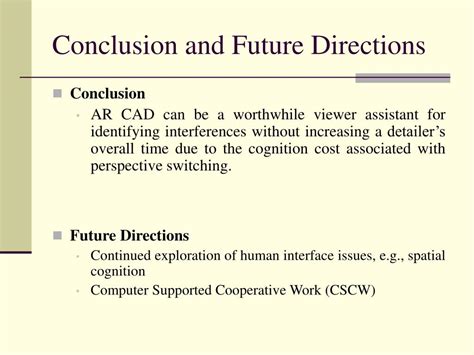Intro
Discover key Diazepam facts, including its uses, side effects, and interactions. Learn about this benzodiazepine medication, its benefits, and risks, as well as dependency and withdrawal symptoms.
Diazepam, commonly known by its brand name Valium, is a medication that has been widely used for decades to treat various health conditions. Its applications range from managing anxiety and insomnia to treating seizures and muscle spasms. Despite its popularity, there are many aspects of diazepam that the general public may not be fully aware of. Understanding these facts can provide valuable insights into how diazepam works, its benefits, and its potential risks.
The importance of knowing more about diazepam cannot be overstated, especially given its widespread use. From its chemical composition to its effects on the body, having a comprehensive understanding of this medication can help individuals make informed decisions about their health. Furthermore, recognizing the potential for misuse and the importance of responsible prescribing and use is crucial in minimizing risks associated with diazepam.
As we delve into the world of diazepam, it becomes clear that this medication is a complex substance with a wide range of applications and implications. Whether you are considering using diazepam for a medical condition or are simply interested in learning more about this commonly prescribed drug, there is much to explore. The following information aims to shed light on key aspects of diazepam, covering its mechanism of action, benefits, potential side effects, and more.
Diazepam Overview

Chemical Structure and Pharmacokinetics
The chemical structure of diazepam is characterized by its benzodiazepine ring, which is responsible for its pharmacological activity. Once ingested, diazepam is absorbed into the bloodstream and distributed throughout the body. It undergoes metabolism in the liver and is eventually excreted in the urine. Understanding the pharmacokinetics of diazepam is essential for determining the appropriate dosage and frequency of administration to achieve the desired therapeutic effects while minimizing side effects.Benefits of Diazepam

Anxiety and Insomnia Treatment
For individuals suffering from anxiety or insomnia, diazepam can provide rapid relief from symptoms. Its anxiolytic effects can help reduce feelings of anxiety and fear, making it easier for individuals to cope with stressful situations. Similarly, its hypnotic effects can induce sleep in individuals with insomnia, improving the quality of rest and enhancing overall well-being. However, it is essential to use diazepam for these conditions under the guidance of a healthcare professional, as prolonged use can lead to dependence.Potential Side Effects and Risks

Dependence and Withdrawal
The potential for dependence on diazepam is a critical consideration for both healthcare providers and patients. Dependence can develop after just a few weeks of use, and stopping the medication abruptly can lead to withdrawal symptoms. These symptoms can range from mild to severe and may include anxiety, insomnia, tremors, and in severe cases, seizures. To mitigate these risks, it is crucial to follow a tapering schedule when discontinuing diazepam, under the supervision of a healthcare professional.Special Considerations and Precautions

Interactions with Other Medications
Diazepam can interact with a variety of other medications, either enhancing their effects or increasing the risk of side effects. For example, combining diazepam with other central nervous system depressants, such as alcohol or opioids, can lead to increased sedation and respiratory depression. It is essential for patients to inform their healthcare provider about all medications they are currently taking to avoid potential drug interactions.Conclusion and Future Directions

Final Thoughts
In the meantime, it is crucial for healthcare providers and patients to work together to ensure the responsible use of diazepam. This includes carefully weighing the benefits and risks, monitoring for signs of dependence, and exploring alternative treatments when appropriate. By doing so, we can maximize the therapeutic potential of diazepam while minimizing its risks, ultimately improving the lives of those who rely on this medication.What is diazepam used for?
+Diazepam is used to treat anxiety disorders, insomnia, seizures, and muscle spasms. It belongs to a class of medications known as benzodiazepines and works by enhancing the effects of the neurotransmitter GABA in the brain.
Is diazepam addictive?
+Yes, diazepam can be addictive. The risk of dependence increases with long-term use, and stopping the medication abruptly can lead to withdrawal symptoms. It is essential to use diazepam only as directed by a healthcare provider and to follow a tapering schedule when discontinuing its use.
Can diazepam be used during pregnancy or breastfeeding?
+Diazepam should be used with caution in pregnant or breastfeeding women. It can pass into breast milk and may have effects on the fetus or newborn. Pregnant or breastfeeding women should consult their healthcare provider before taking diazepam to discuss the potential risks and benefits.
We hope this comprehensive overview of diazepam has provided you with a deeper understanding of this medication, its uses, benefits, and risks. If you have any further questions or would like to share your experiences with diazepam, please do not hesitate to comment below. Your insights can help others navigate the complexities of this medication and make informed decisions about their health. Additionally, if you found this article informative, consider sharing it with others who may benefit from this knowledge. Together, we can promote a better understanding of diazepam and ensure its safe and effective use.
